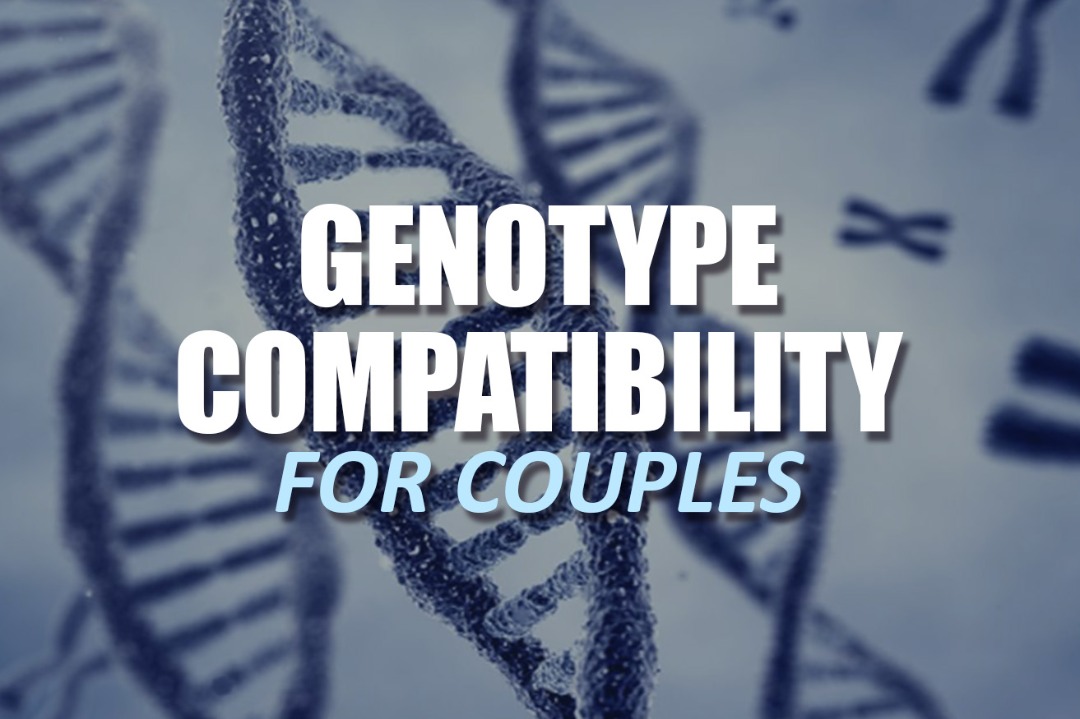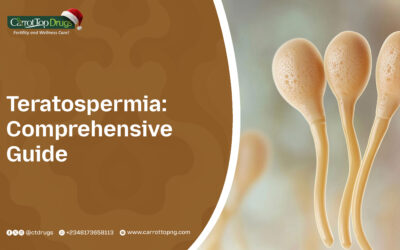Introduction
When considering starting a family, many couples focus on emotional, financial, and physical readiness. However, one crucial aspect that is often overlooked is genotype compatibility for couples. Genotype refers to an individual’s genetic makeup, specifically the genes inherited from both parents. These genes determine several traits, including the risk of inheriting specific health conditions.
In regions like Nigeria and many parts of Africa, the topic of genotype compatibility is essential because certain genetic conditions, such as sickle cell disease (SCD), are highly prevalent. Ignoring genotype compatibility can lead to serious consequences for future children, potentially subjecting them to a lifetime of medical complications. Understanding the genotype compatibility for couples can help reduce the risk of genetic disorders and promote healthier families.
Epidemiology of Children with Sickle Cell Disease in Nigeria and Globally
Sickle cell disease (SCD) is a genetic disorder affecting hemoglobin, the protein in red blood cells that carries oxygen throughout the body. People with SCD have abnormal hemoglobin, which causes red blood cells to become stiff and shaped like sickles, leading to blockages in blood flow and chronic health issues.
Globally, it is estimated that around 300,000 babies are born with SCD each year. Sub-Saharan Africa, especially Nigeria, bears the brunt of this burden. Nigeria has the highest number of children born with SCD annually, with estimates suggesting that about 150,000 children are born with the condition every year. The World Health Organization (WHO) estimates that nearly 2-3% of children born in Nigeria are affected by sickle cell disease. This alarming statistic highlights the critical need for understanding genotype compatibility for couples in preventing the inheritance of such life-altering diseases.
Globally, the prevalence of sickle cell disease is highest in regions where malaria was or is still common. The sickle cell trait, which offers some protection against malaria, is widespread in parts of Africa, the Middle East, India, and the Mediterranean. In these regions, a significant number of individuals carry the sickle cell trait (AS), which, if paired with another person carrying the same trait, increases the chances of having a child with sickle cell disease.
What Does Genotype Compatibility Mean?
Genotype compatibility for couples refers to the genetic matching between two people intending to have children. When two people are compatible in terms of their genotypes, their chances of having children free from certain inherited diseases, particularly sickle cell disease, increase. When couples are not genotype-compatible, they risk passing on a combination of genes that could lead to their children inheriting debilitating conditions.
For instance, sickle cell disease occurs when a child inherits two abnormal hemoglobin genes—one from each parent. A person with genotype AA has normal hemoglobin, while those with AS have the sickle cell trait, and individuals with SS have sickle cell disease. If both partners have the AS genotype, their children have a 25% chance of inheriting the SS genotype (sickle cell disease), a 50% chance of inheriting AS (sickle cell trait), and a 25% chance of inheriting AA (normal genotype).
Compatible Genotypes
Understanding genotype compatibility for couples is key to avoiding genetic disorders like sickle cell disease in their children. Genotypes are classified based on hemoglobin in red blood cells, with the most common being AA, AS, and SS.
AA + AA (Completely Safe)
When both partners have the AA genotype, their children will also inherit the AA genotype. This combination poses no risk of passing on the sickle cell trait (AS) or disease (SS). Couples with this pairing can confidently have children without concern for genetic disorders like sickle cell disease.
AA + AS (Low Risk)
In this combination, one partner has the AA genotype (normal), while the other has the AS genotype (sickle cell trait). The child has a 50% chance of inheriting the AA genotype (normal) and a 50% chance of inheriting the AS genotype (sickle cell trait). There is no risk of sickle cell disease, but the child may carry the sickle cell trait. This combination is generally safe, though the child may pass on the AS genotype to future generations.
AA + SS (Moderate Risk)
If one partner has the AA genotype (normal) and the other has the SS genotype (sickle cell disease), all children will inherit the AS genotype (sickle cell trait). There is no risk of sickle cell disease, but the trait may affect future generations. This combination is manageable but should be considered carefully.
AS + AS (High Risk)
When both partners have the AS genotype (sickle cell trait), there is a 25% chance of having a child with the AA genotype (normal), a 50% chance of having a child with the AS genotype (sickle cell trait), and a 25% chance of having a child with the SS genotype (sickle cell disease). This pairing significantly risks passing on sickle cell disease, and genetic counseling is advised before starting a family.
AS + SS (Very High Risk)
In this combination, one partner has the AS genotype (sickle cell trait), and the other has the SS genotype (sickle cell disease). There is a 50% chance of their child inheriting the AS genotype (sickle cell trait) and a 50% chance of inheriting the SS genotype (sickle cell disease). This pairing has a very high risk of sickle cell disease, so couples should approach with caution and consider genetic counseling.
SS + SS (Extremely High Risk)
When both partners have the SS genotype (sickle cell disease), all of their children will inherit the SS genotype, meaning they will all have sickle cell disease. This is the highest risk combination, and couples are encouraged to explore alternatives such as assisted reproductive technologies or adoption.
Reasons for Genotype Compatibility
-
Prevention of Genetic Disorders
The main reason to understand genotype compatibility for couples is to prevent children from inheriting genetic disorders like sickle cell disease. When two individuals with the AS genotype marry, their children are at high risk of inheriting the SS genotype, leading to sickle cell disease. Knowing this in advance can help couples take precautions or explore other family planning options, such as in vitro fertilization (IVF) with pre-implantation genetic diagnosis (PGD).
-
Better Health Outcomes for Children
Genotype-compatible couples reduce the risk of passing genetic disorders to their children, improving overall health for future generations. This lowers the physical, emotional, and financial burden of managing lifelong diseases like sickle cell anemia. A child’s health prospects improve when parents understand their genotype compatibility for couples and take necessary precautions.
-
Informed Family Planning
Genotype testing and compatibility assessments help couples make informed family planning decisions. Incompatible couples can consider genetic counseling, adoption, or assisted reproductive technologies to reduce genetic risks. Understanding genotype compatibility for couples helps them carefully weigh their options and plan effectively.
-
Avoidance of Emotional and Financial Strain
Raising a child with a genetic disorder like sickle cell disease is emotionally and financially demanding. The child may need frequent hospital visits, blood transfusions, and lifelong care. Understanding genotype compatibility for couples reduces the risk of severe genetic conditions. It also minimizes emotional stress for both parents and the child.
-
Promoting Healthy Families
Healthy family planning starts with understanding the genetic risks of certain pairings. Genotype-compatible couples can confidently proceed, minimizing health risks for their children. This promotes stronger, healthier families, which is vital for a productive society. Genotype compatibility for couples is crucial in achieving this.
Conclusion
Understanding genotype compatibility for couples is crucial, especially in regions like Nigeria with high sickle cell disease prevalence. Genotype testing before marriage or conception helps couples make informed decisions to avoid raising children with genetic disorders. Knowing one’s genotype and understanding genetic risks allows couples to take control of their reproductive health. This ensures better family planning and a healthier future for their children.
FAQs
- What is genotype compatibility for couples?
Genotype compatibility for couples refers to the genetic matching of two individuals to determine the likelihood of passing on genetic disorders to their offspring.
- Why is genotype compatibility important for couples?
Genotype compatibility is essential because it helps prevent the birth of children with genetic disorders such as sickle cell disease. Couples who are not genotype-compatible have a higher risk of having children with severe health conditions.
- How do I know if my partner and I are genotype-compatible?
You and your partner can undergo a simple blood test to determine your genotypes. Once you know your genotypes, a doctor or genetic counselor can explain the risks associated with your pairing.
- What happens if my partner and I are not genotype-compatible?
If you and your partner are not genotype-compatible, you have several options. You can seek genetic counseling to understand the risks and explore alternatives like assisted reproductive technologies or adoption.
- Can two people with the AS genotype get married?
While two people with the AS genotype can get married, they risk having children with sickle cell disease. It is important to understand the risks and consider options like genetic counseling before starting a family.
- What is the chance of having a child with sickle cell disease if both parents are AS?
If both parents have the AS genotype, there is a 25% chance that their child will inherit sickle cell disease (SS). There’s a 50% chance that their child will inherit the AS genotype (sickle cell trait). There’s a 25% chance that their child will have the AA genotype (normal).
- Can sickle cell disease be cured?
Currently, there is no widespread cure for sickle cell disease. However, treatments such as bone marrow transplants, medications, and regular medical care can help manage symptoms and improve quality of life.

















